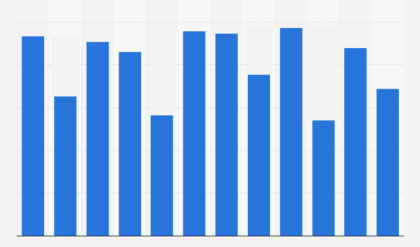In this chapter we review the different ways in which the literature has dealt with modeling informality in credit markets instead of labour markets, in a partial equilibrium context. Models with a frictionless labour market mainly analyze informality in terms of other kind of imperfections. The participation to the informal economy usually implies a cost in terms of limited access to a public good or to formal credit markets. A large informal credit market also could have an impact on the efficacy of monetary policy, but so far theoretical work is very limited (or missing) in this area.
As reviewed in chapter II, informal moneylenders on average charge much higher interest rates than formal interest rates due to segmented credit markets while informal interest rates range from 0 to 200 percent per year. Relatively low interest rates in informal credit markets (say, less than 75 per cent per year that would be on average) can be justified by friends and family lending or multiple lending from both formal and informal financial markets (Madestam (2009)). As explained in Hoff and Stiglitz (1990), (rural) informal credit markets do not work neither as classical competitive markets, nor as markets where the local moneylender has a monopoly power. The explanation of the higher interest rate charged has normally been attributed to a lack of information. Adverse selection, moral hazard and also imperfect enforcement require costly mechanisms such as the design of contracts, screening process, etc. Also banks rely heavily on collateral and, by definition, informal firms lacking of collateral, are left with one only option: borrow in the informal credit sector. This is the case of Thailand, India and the majority of developing countries.
Ghosh et al. (1999) refers to three strands of the literature in the area of informal credit markets: adverse selection, moral hazard and imperfect contract enforcement. Indeed, informal credit markets have often been associated with the existence of imperfect information in financial markets and limited enforceability. Imperfect information can generate adverse selection, moral hazard and search externalities.
Below we look at key papers in each strand of the literature and identify some characteristic modeling strategies. A common feature is that, due to a general lack of collateral, entrepreneurs in the developing world are credit-constrained and a significant fraction of credit is still in the hands of operators in the informal credit market despite the development of a formal credit system. Ghosh et al. (1999) review the different modeling strategies in the partial equilibrium analysis of informal credit markets. The authors point to informal credit markets and moral hazard and limited enforceability by distinguishing: models with involuntary and with voluntary default. The main result highlighted in the survey is that despite the different modeling details, the models share a common view: credit rationing appears as a rational response to information and enforceability problems and the small firms with minimum or none collateral seem the more exposed. As far as policy recommendations are concerned, the authors call for measures aimed at improving the institutional environment such as improving borrowers’ bargaining power, decrease in asset inequality etc. instead of macroeconomic policy aimed at increasing the interest rate. Yunus and Weber (2007) contribute to the debate on the impact of microcredit on the standard of life of the very poor. The author adopts a revolutionary approach and look at the positive impact of informal credit on the development and standard of life in the developing world. Microcredit, following Yunus’s definition targets the very poor, particularly women, and it is based on trust since the lack of collateral is one of the main limitations of borrowing from standard financial institutions.
As far as theoretical work on credit-constrained entrepreneurs and informal credit market is concerned, firstly, we look into papers that focus on adverse selection and moral hazard. The literature in this area clearly assumes missing markets to explain the emergence of an informal credit market. Secondly, we investigate theoretical modeling with credit constraints due to search externalities. This strand of literature only mentions, without explicitly models, informal credit markets. Thirdly, we review papers that model the decision to be formal or informal by assuming the lack of access to formal finance as one of the main cost of going informal. Finally, we move onto papers that investigate the relationship between informal credit markets and monetary policy.
A. Informal Credit Market, Asymmetric Information, and Formal-Informal Linkages
The literature on informal credit markets explains informality in the financial sector as a cause of pre and/or post-contractual imperfect information which generates problems of adverse selection and moral hazard. According to this literature, credit-constrained individuals with limited access to formal banks try to borrow money informally.
Horizontal linkages
Within this framework, formal banks compete directly with informal moneylenders. Individuals can access credit in a two tier process by first approaching formal banks with excess liquidity, and then, as this is no longer available, move onto informal moneylenders to borrow residual funds. Bell (1990) examines the impact on the rural credit market in India of the introduction of a system of rural cooperatives in the 1950s. Indian data shows that the creation of the rural cooperatives displaces the informal moneylenders. In an analytical framework, Bell (1990) shows that such a trend arises because the monopolistic market power of the rural moneylenders is curbed by the increased competition from the formal credit institutions such as cooperatives, banks, and government.
Kochar (1997) investigates credit rationing constraints in rural credit markets in India and particularly, separates the demand for credit from the lenders’ decision on access. Kochar recognizes the fact that the provision of formal credit to rural farmers at a relatively low interest rate in an attempt to expand agricultural investment may lead to an excess demand for formal credit, and thus tougher formal credit rationing constraints. It is such rationing constraints that impart a dual nature to the rural credit market: the formal regulated sector and the informal sector. Both Bell (1990) and Kochar (1997) argue that the rationing constraints such that lenders have to charge a high rate for risky households due to the high screening and monitoring costs would limit the role of formal credit in enhancing rural investment and reduces the demand for credit.
Arnott and Stiglitz (1991) investigate the theoretical underpinnings of insurance markets characterized by moral hazard, and show how moral hazard can have a mixed impact of non-market insurance institutions. Households and firms borrow from friends, family and neighbors when hit by an adverse shock, and pay back later when things get better, as reported by Aryeetey et al. (1997). Such informal mutual assistance between non-market institutions is unobservable to market insurers and its impact appears to be either negative or positive, depending on the market structure. From their model, it is predicted that, when formal and informal insurers have the same information, the informal insurance crowds out formal insurance leading to welfare-inferior outcomes. In contrast, when informal insurers have a better position in peer monitoring, the existence of informal insurance is welfare-enhancing.
Vertical linkages
Informal lenders have access to formal banks and so can use funds generated formally for lending in informal markets. Hoff and Stiglitz (1997), Floro and Ray (1997), Bose (1998) and Madestam (2009), among others, discuss this vertical interaction between formal and informal credit sectors. Most of these studies report the adverse effect of government policies of providing low-cost or subsidized credit to the agricultural sector through the formal credit institutions such as cooperatives and banks. Hoff and Stiglitz (1997) develop models to show that with endogenous enforcement costs, government-subsidized formal credit may not be able to enhance agricultural investment. Subsidies may attract more moneylenders to enter the informal credit market leading to higher interest rates through three channels. A rise in new entry may raise the marginal transaction costs (via economies of scale), increase the marginal enforcement cost of moneylenders due to reduced borrowers’ incentives to repay (via enforcement externalities), and reduce the flows of information about each borrowers’ credit history and thus weaken “reputation effects” that punish defaulters. Through these three effects, subsidized funds may eventually raise interest rates and reduce the availability of loans in the informal sector. Bose (1998) argues that although the informal moneylenders as a whole have some relative advantage in collecting, screening, and monitoring the information about borrowers’ credit history and investment behavior, they may also face the problem with the asymmetric information about the borrower-specific degree of risk. Such heterogeneity in moneylenders and borrowers brings about adverse composition effects and, in turn, increase interest rates charged by moneylenders as in Kochar (1997). Floro and Ray (1997) reach a similar conclusion but with different reasoning. Considering the special case of Philippines, they find that an expansion of credit available to informal lenders through the formal sector might trigger aggressive lending (like a credit war). In a repeated game framework, moneylenders might then decide to collude among themselves leading to higher interest rates.
The findings in Madestam (2009) are in line with the above studies using a model that like those assumes formal and informal credit sectors, but that in addition assumes that informal moneylenders are heterogeneous. Two types of lenders exist in the informal credit market: rich informal lenders who do not to borrow formally to lend informally, and poorer informal lenders who must access banks to fund their business. The model rationalizes the coexistence of formal and informal credit markets assuming that formal and informal lenders face different agency and monitoring constraints (for example, informal lenders are able to closely monitor borrowers who are usually known clients whilst banks have limited information on moral hazard at the investment stage). The main findings of the paper are that the existence of informal finance results in three effects. First, informal credit leads to the “investment effect” such that additional informal finance increases the investment of bank rationed borrowers by channeling bank funds to informal lending. Second, informal credit generates a “disciplinary effect”. Since borrowers in informal markets do not need to pay agency costs that usually arise from bank finance, the borrowers’ return to investment is higher than otherwise and they have less incentives to default, leading to increased bank lending. Finally, the agency problem leads to the “rent-extraction effect”. By letting informal lenders with good credit or collateral channel bank funds to informal borrowers, banks are able to avoid high agency costs arising from directly lending to poor borrowers (in addition to the monitoring problem), preventing borrowers from accessing bank finance. As a result, if the rent-extraction effect prevails, borrowers are worse off. Using this model, Madestam (2009) also investigates the role of market power in the banking sector, reaffirming the general finding that the stronger this is the less efficient the credit market equilibrium. When the banking sector has higher market power, the rent-extraction effect dominates, and as a corollary informal credit markets are more prevalent.
B. Informal Credit Markets and Trading Frictions
As discussed, one way to model credit rationing is by introducing imperfect information. While models with moral hazard and adverse selection in financial markets have been widely discussed in other surveys,25 the role of search externalities in credit markets has only recently been recognized. Within this framework, market liquidity depends on the matching process between borrowers and lenders. This literature suggests that search frictions in credit markets are particularly useful in the modeling of informal labour an product markets where informal firms cannot rely on collateral and need to contact informal moneylenders. Wasmer and Weil (2004) develop a model with credit and labour market imperfections due to trading frictions in both markets,26 where labour and capital imperfections are symmetric. Assumptions in this model depart from the traditional search and matching literature because here entrepreneurs need to finance the search process and need to find a lender (i.e., a moneylender in the informal credit market) to start-up a business activity. Likewise, Becsi et al. (2005) model credit market activity within a search match framework where borrowers are heterogeneous. A few other papers adopt trading frictions in the credit markets (Dell’Ariccia and Garibaldi (2000) among the others), but to the best of our knowledge, none has explicitly used trading frictions in the credit market to model the firm’s decision to enter or not the informal sector and trading frictions in the credit market have not yet been incorporated in a DSGE model. Wasmer and Weil (2004), by introducing financial imperfections, provide a simple measure of the financial accelerator based on the idea of a ‘credit gap’: credit market frictions reduce the number of entrepreneurs discouraged by the lower probability of finding a lender, and in turn this creates a negative externality by reducing the number of lenders, accelerating the adverse implications of a contraction in credit. This way, credit market imperfections magnify the negative consequences of economic shocks. The authors show that the excess return on business loans, i.e., the “credit gap”, depends on the bank’s bargaining power and on the degree of market imperfections.
C. Credit-Constrained Entrepreneurs, Informal Credit and Labour Markets Linkages
In the firm’s choice between operating formally or informally (i.e., intrafirm margin), access to informal credit markets is often represented as one of the costs of going informal.
This is the approach taken by Straub (2005) where access to formal credit markets and key public goods (property rights and contract enforceability) interact with the entry costs in the formal sector. The model is based on two of the above mentioned costs due to the lack of information: creation of the right incentives and “Mafia-style” enforcement. The author builds on the investment model with moral hazard by Holmstrom-Tirole (1997) to show that the choice between formal and informal sectors depends on the registering costs, the relative efficiency of credit markets, initial wealth and collateral.
Along these lines, de Paula and Scheinkman (2007) explore what are the implications of having (or not) access to formal credit markets. The authors model informality in an occupational choice model where low ability agents work as salaried workers or become managers in the informal sector while high ability individuals prefer to be managers in the formal sector. The definition of informality is in terms of tax avoidance (evasion dualism). In equilibrium, the marginal firm is indifferent between the obligation of paying taxes on the one hand and the higher cost of capital together with scale limitations on the other. In particular, informal firms face a higher cost of capital and a probability equal to one to be detected if their capital is above a threshold value. Capital here is a proxy for the size of the firm. Other authors before show that the size of the firm is an important factor in the distinction between formal and informal firms, Rauch (1991)de Paula and Scheinkman (2007) add capital and show that constrained and unconstrained informal firms have a lower capital-labour ratio than formal firms. They then develop a model with two production stages and show that the informality of a firm is correlated to the informality of its upstream and downstream sector. Also based on Rauch (1991), Antunes and Cavalcanti (2007) model the firm’s decision to be formal or informal. In particular, risk-neutral agents decide to be workers or entrepreneurs in function of their talents. Entrepreneurs then decide to be formal or informal through a cost-benefit analysis in which they weight the possibility to avoid taxes and regulation costs with the imperfect access to formal credit markets.
D. Informal Credit Markets and Monetary Policy
The implications for monetary policy of informal behavior in credit markets are controversial. One set of scholars examining this in the context o low income countries, for example, argues that low interest rate policy would reduce the cost of physical capital and thus promote capital accumulation and growth when credit markets are segmented and lower income households are credit constrained and thus, can only access informal credit markets. The monetary and fiscal policy implications for keeping rural interest rates low is illustrated in Ghatak (2007): Once farmers have higher real income, they will raise their repayments, reducing the risk premium and thus the interest rate. Measures to raise real income suggested include low inflation as well as increasing agricultural output through rural innovation. In this scenario, inflation not only reduces farmers’ real income but also moneylenders’ real value of repayments, inducing higher interest rates which, in turn, compensates for non-performing loans.
On the other hand, McKinnon (1973) and Shaw (1973) emphasize the importance that funds remain market-determined and are not rationed as a consequence of interest rate interventions (e.g. administratively-enforced caps) because this promotes the accumulation of money balances which, in their view, are complements and not substitutes of physical capital. Financial regulation restraining real interest rates as well as other forms of selective credit control could reduce savings and investment while perversely enhancing segmentation of financial markets. Therefore, these scholars argue that policies of financial liberalization that free real interest rates in formal credit markets can increase savings and capital accumulation (see e.g. Fry (1978)) with benefits for borrowers of all income levels. One criticisms of this view can be found in Taylor (1983) and van Wijnbergen (1982), who maintain that if interest payments account for a large proportion of total production costs, aggressive financial liberalization ending up in strong increases in borrowing costs by low income producers could well lower overall output, and divert credit away from informal markets into formal banking sectors, thereby raising further informal interest rates, and reducing informal borrowing and investment by lower income agents.






Comments are closed.